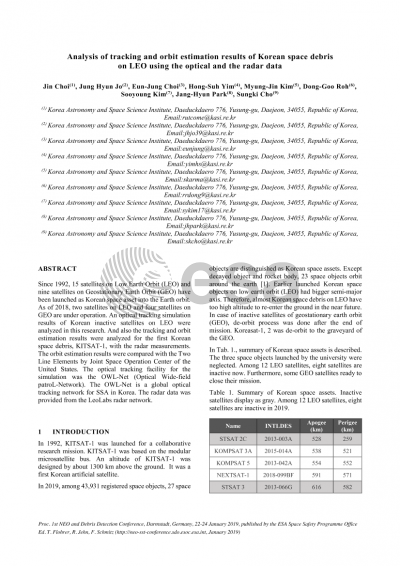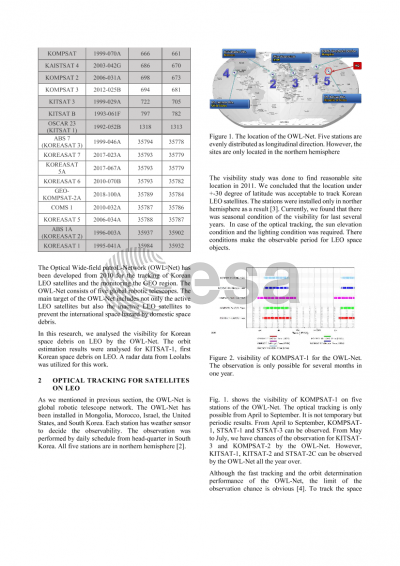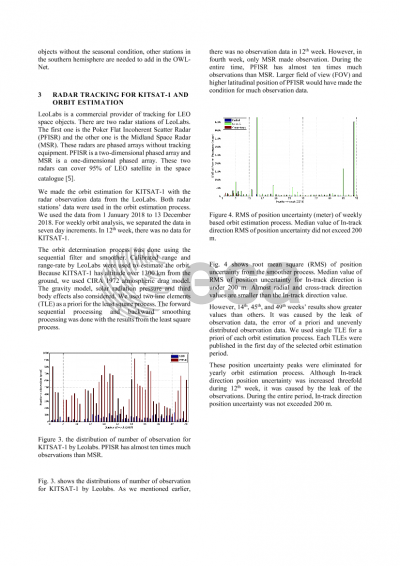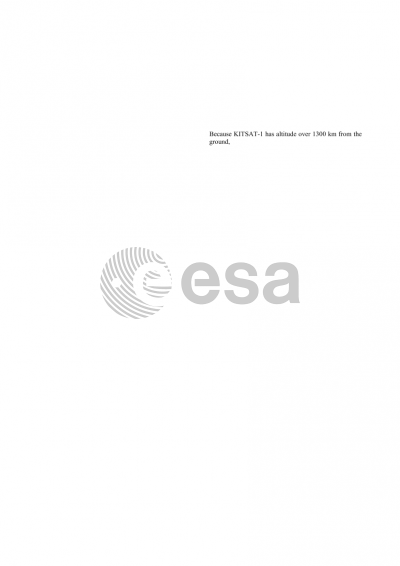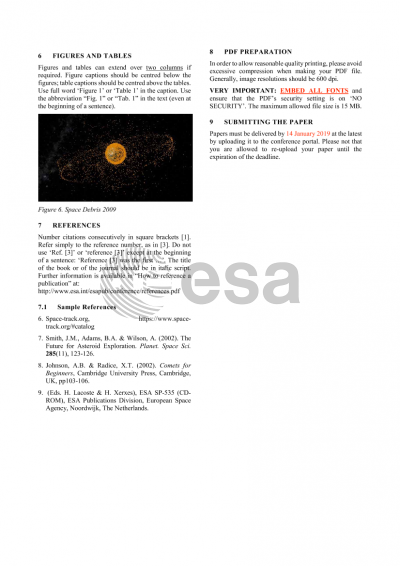Document details

Abstract
Since 1992, 11 satellites on Low Earth Orbit (LEO) and eight satellites on Geostationary Earth Orbit (GEO) have been launched as Korean space asset into the Earth orbit. As of 2018, two satellites on LEO and four satellites on GEO are under operation. An optical tracking and orbit estimation results of Korean non-operational satellites on LEO were analyzed in this research. And also the tracking and orbit estimation results were analyzed for the first Korean satellite, KITSAT-1, with the radar measurements. The orbit estimation results were compared with the Two Line Elements by Joint Space Operation Center of the United States. The optical tracking data was achieved by using the OWL-Net (Optical Wide-field patroL-Network). The OWL-Net is a global optical tracking network for SSA in Korea. The radar data was provided from the LeoLabs.
Preview
